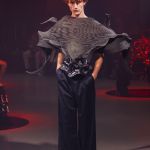The partnership agreement between Kanye West and Nike - the same that, over the years, will become the main fighting reason between the parties - was the first that Nike made with a non-athlete - despite the supermodel Tyra Banks having recently admitted that she thought she was the first ever.
It was 2009 and that huge phenomenon that in the following decade would have forever shaken the world of fashion, sneakers, was nothing more than a niche stuff, a niche that, for decades, had firmly rested its bases in basketball and NBA stars. Larry Bird and Magic Johnson for Converse, Dominique Wilkins and Allen Iverson for Reebok, and, of course, Michael Jordan for Nike and Jordan brand: the main sneaker creators, the inspirations behind the sneakerheads most-wanted silhouettes were the best professional athletes in the country that more than any other had made sport a cultural thing. Now, one of the things that social networks have done, Instagram in particular, has been completely overturning that narrative: it is unlikely that in recent years one of the most hype sneakers on the market has been created by an athlete, much easier than the name of Kanye West or that of Travis Scott would be printed on the silhouette.
























































